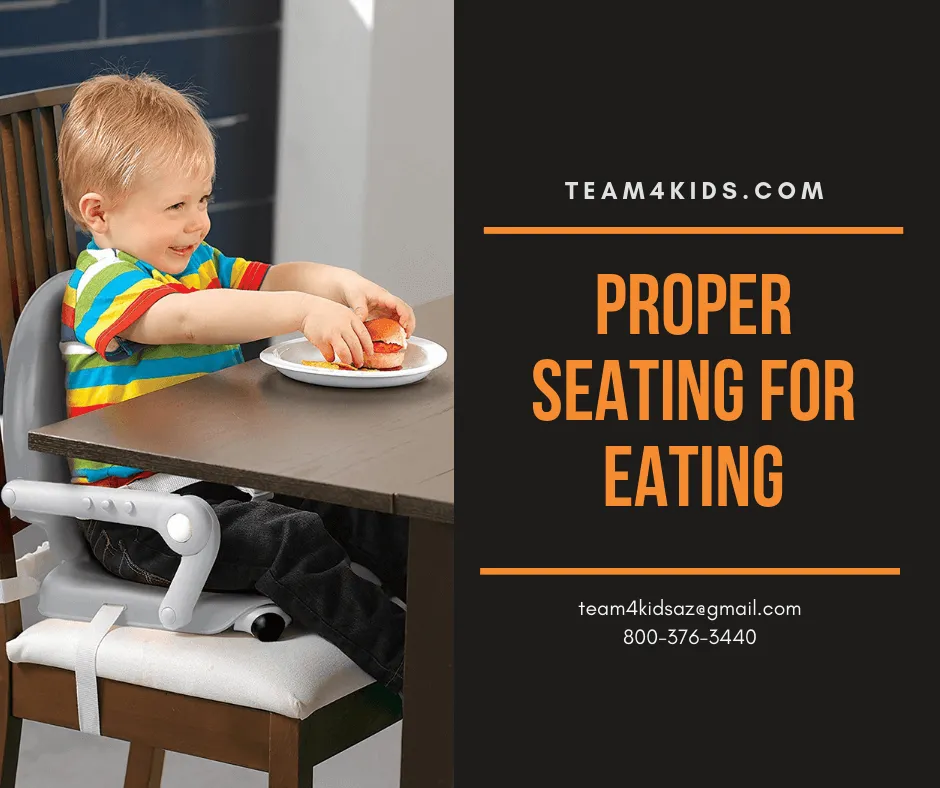Does your child graze around the table at mealtime? As a feeding therapist, I often come across children that refuse to eat at the table or sit in a high chair. The behavior that is most often reported during a feeding evaluation is that the child will sit for less than 3 minutes, get up from the table, walk around, play and come back from time to time to grab additional bites. Most of these children are not getting enough food, have very limited diets and are at risk for feeding difficulties.
Introducing new foods take time, especially if your child has feeding problems. If your child is only at the table for 3 minutes, you do not have the proper amount of time to explore the food with your child and they are less likely to give it a try. Additionally, children model the behavior of their parents. If they see you eating food at the table, they are more likely to try it.
In feeding therapy, we often use special feeding chairs, high chairs or boosters. These chairs not only allow for proper support during feeding but significantly reduce the avoidance and escape behaviors that are seen when exploring new foods. If you notice that your child is grazing at mealtimes, I highly recommend getting different seating for them.
When you first introduce the new chair at home, spend time just playing at the table in the chair with their favorite toy or music. Make it fun before you try to introduce mealtime in the chair. We want this to be a positive experience. When children come into feeding therapy at the clinic, the majority of them climb up into the chair themselves and do not view it in a negative way because we spend the time initially making the chair something fun.
If you have questions about the proper chair for your child, please talk to your feeding therapist.


